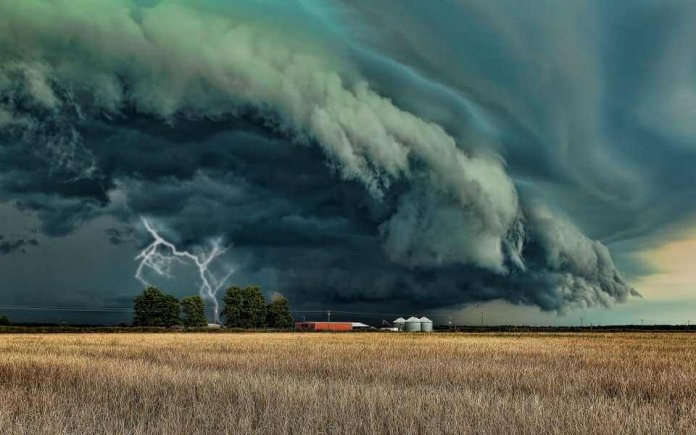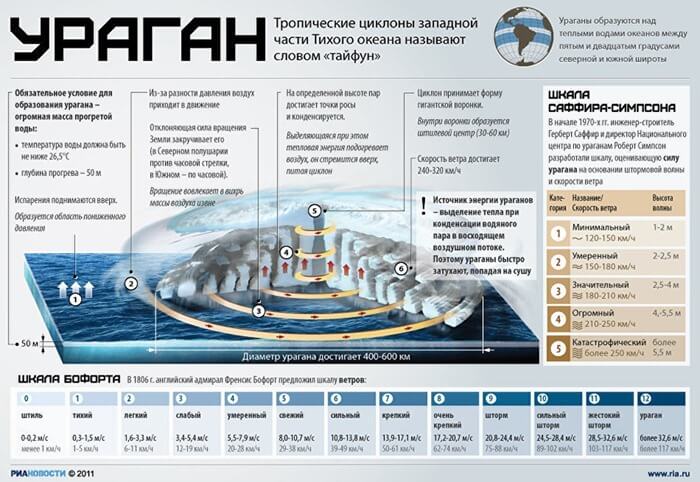Hurricanes are exciting and extremely dangerous weather events. Although hurricanes usually weaken on land, they destroy homes and cause flooding due to heavy rainfall and stormy weather. Now a powerful tropical cyclone with the tender name "Irma" is raging over the Atlantic. It is stronger than Hurricane Harvey, which hit Texas in August and caused catastrophic flooding. The island of Cuba and the Bahamas were hit hardest by Irma.
According to forecasts of meteorologists, both "Harvey" and "Irma" may surpass the destructive force of a hurricane "Maria", which will sweep across the islands of the Caribbean.
According to statistics, over the past 200 years, nearly 2 million deaths have been caused by hurricanes. About 90% of deaths caused by hurricanes were due to floods.
Here are the top 10 most interesting hurricane facts.
10. Where hurricanes are born
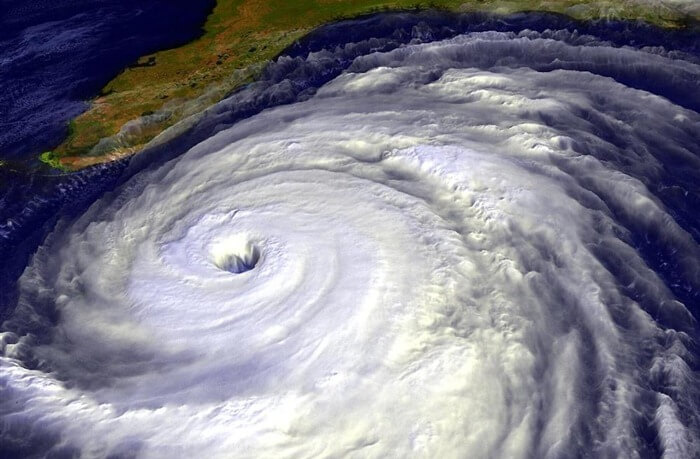 Hurricanes are powerful tropical storms (or cyclones) that appear in the Atlantic Ocean and the Gulf of Mexico.
Hurricanes are powerful tropical storms (or cyclones) that appear in the Atlantic Ocean and the Gulf of Mexico.
Hurricanes "born" in the Pacific Northwest (near Japan) are called "typhoons", and those that occur in the South Pacific or in the Indian Ocean are called cyclones.
9. When a hurricane is considered a hurricane
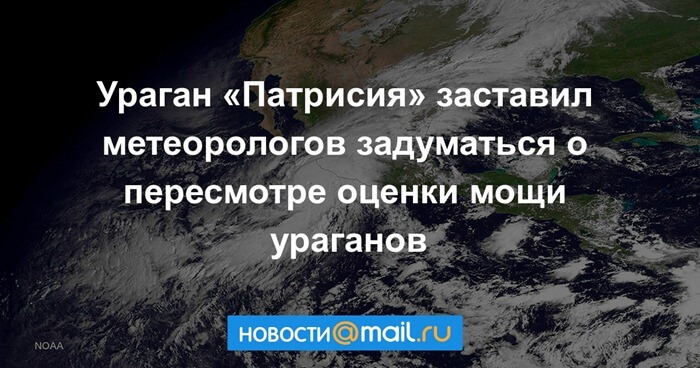 A tropical storm is classified as a hurricane when its winds reach speeds of at least 119 km / h. The fastest hurricane wind speed on record was 345 km / h when Hurricane Patricia raged in 2015.
A tropical storm is classified as a hurricane when its winds reach speeds of at least 119 km / h. The fastest hurricane wind speed on record was 345 km / h when Hurricane Patricia raged in 2015.
Incidentally, the word "hurricane" comes from "hurucane", the Quiche word for "evil spirit of the wind", which is not surprising.
8. How hurricanes occur
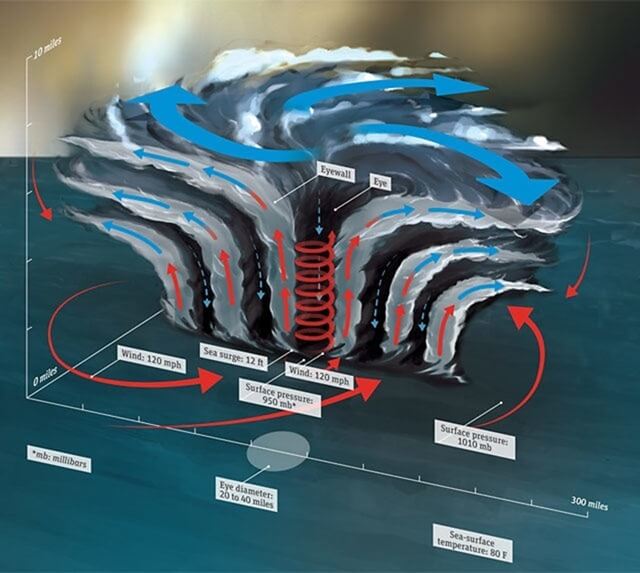 In eighth place in the ranking of unusual facts about hurricanes is an interesting concept that is not yet fully supported by factual material.
In eighth place in the ranking of unusual facts about hurricanes is an interesting concept that is not yet fully supported by factual material.
The onset of hurricanes usually occurs between June and November, when there are all conditions for the formation of tropical storms: the sea is warm (from 26 degrees), and the atmosphere is humid.
- Hurricanes form over warm waters when there are large pressure and temperature differences between warm water and clouds. Clouds pull in moisture and heated air near the surface of the water rises towards the clouds, creating a column of fast moving air.
- Above, a zone of reduced pressure is created, where new masses of hot air rise and condense, creating a chain reaction.
- Air currents circle above the water, and rising up, the air becomes colder and turns into thunderclouds. They combine and go through three stages of "development": tropical depression (an area of low atmospheric pressure with wind force less than 50 km / h), storm and hurricane.
However, a hurricane does not always occur, even if there are all conditions for its development. This confuses scientists, because such a situation means the presence of unknown factors that have yet to be discovered.
7. A hurricane is a "heat engine"
Hurricanes run on heat generated by cloud formation and precipitation. To understand this process, picture yourself getting out of the shower. You feel colder than usual because water droplets evaporate from your skin into the air.And hurricanes have the opposite process - they pull water out of the air and release heat.
Therefore, powerful storms generate incredible amounts of energy. Every second major hurricane releases the equivalent of 10 atomic bombs. Therefore hurricanes are sometimes referred to as "heat engines".
6. The biggest hurricane
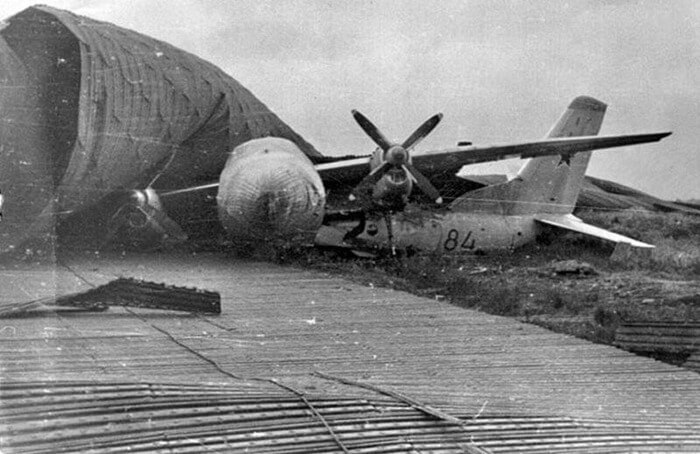 Hurricanes are the largest storms on Earth. Their size varies considerably - from 100 to 2000 km. The largest hurricane documented was Typhoon Tip, which hit the Pacific Northwest in 1979. It had a diameter of about 2220 km. Because of precipitation caused by "Type", 55 people died, and as a result of shipwrecks at sea, 44 people disappeared or died. Usually, in the event of large-scale disasters caused by a hurricane, his name is removed from the list of names for new cyclones. But this did not happen with "Type", and this name was used in 1983, 1986 and 1989.
Hurricanes are the largest storms on Earth. Their size varies considerably - from 100 to 2000 km. The largest hurricane documented was Typhoon Tip, which hit the Pacific Northwest in 1979. It had a diameter of about 2220 km. Because of precipitation caused by "Type", 55 people died, and as a result of shipwrecks at sea, 44 people disappeared or died. Usually, in the event of large-scale disasters caused by a hurricane, his name is removed from the list of names for new cyclones. But this did not happen with "Type", and this name was used in 1983, 1986 and 1989.
5. Thunder and lightning
Hurricanes rarely have thunder and lightning because they are formed by vertical wind currents that force water and ice together.
Those who have seen the hurricane close up report that the sky becomes foggy about a day before stormy weather events. This cloudiness is associated with cirrus clouds, which are part of the hurricane, and are composed of icy crystals. These cirrus clouds also look very beautiful on satellite imagery.
However, in 2005, Hurricane Emily, Hurricanes Rita and Katrina were accompanied by severe thunder and lightning.
4. Eye of the Storm
 All hurricanes have the so-called "eye of the storm" - usually it is 30-65 km in diameter, calm weather reigns in it. That is why, if the eye of a storm passes over an area, the storm subsides there. However, the eye is surrounded by a wall of strong winds where the most severe weather conditions occur. Large hurricanes have fixed eye wall changing cycles, with smaller eyes. It fills with clouds and then "opens" again.
All hurricanes have the so-called "eye of the storm" - usually it is 30-65 km in diameter, calm weather reigns in it. That is why, if the eye of a storm passes over an area, the storm subsides there. However, the eye is surrounded by a wall of strong winds where the most severe weather conditions occur. Large hurricanes have fixed eye wall changing cycles, with smaller eyes. It fills with clouds and then "opens" again.
3. How many portions of a shower in a hurricane
A single hurricane generates over 9 trillion liters of rainfall per day. In just one day, there is so much rainwater that every person on Earth can shower 20 times.
2. Names of hurricanes
 Hurricanes were first named in the 19th century. The tradition began with Clement Ragge of the Australian Meteorological Service. To very violent storms, he nicknamed the people he did not like. During the Second World War, US military forecasters gave the Caribbean hurricanes the names of their spouses and mother-in-law, apparently the temper of both of them was rather severe. It was only after 1945 that a special list appeared in America, consisting of female names in alphabetical order.
Hurricanes were first named in the 19th century. The tradition began with Clement Ragge of the Australian Meteorological Service. To very violent storms, he nicknamed the people he did not like. During the Second World War, US military forecasters gave the Caribbean hurricanes the names of their spouses and mother-in-law, apparently the temper of both of them was rather severe. It was only after 1945 that a special list appeared in America, consisting of female names in alphabetical order.
Currently, an alphabetical list of names is compiled annually for hurricanes that will appear next year. This helps to avoid confusion when several hurricanes are active in the same area.
1. The deadliest hurricane
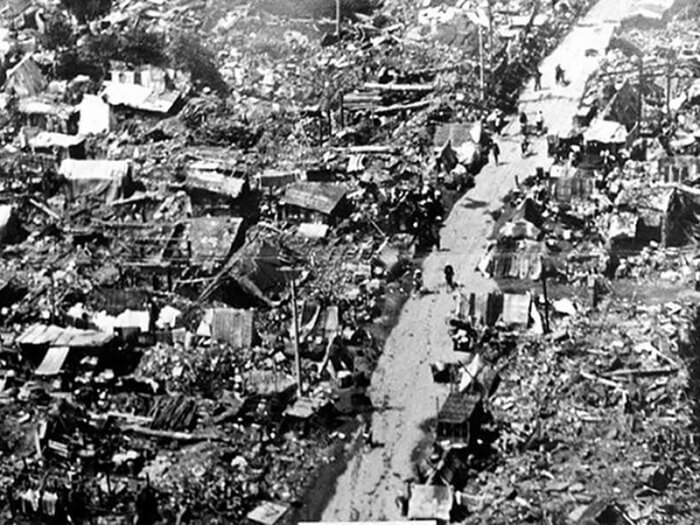 Topping the list of shocking hurricane facts is tropical cyclone Bhola, which hit Bangladesh in 1970. This hurricane created a flood that killed over 500,000 people and over a million buffaloes, goats and other livestock.
Topping the list of shocking hurricane facts is tropical cyclone Bhola, which hit Bangladesh in 1970. This hurricane created a flood that killed over 500,000 people and over a million buffaloes, goats and other livestock.

